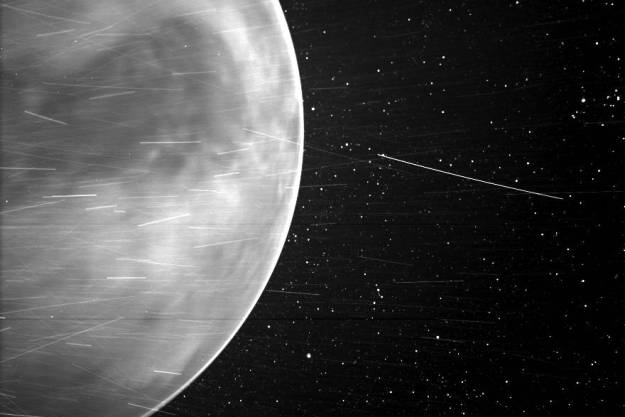
Launched in August last year, the Parker Solar Probe is a NASA project to collect data from the searing heat of the Sun’s corona. It is the first probe to be sent so close to the surface of our star, and on its first orbit it made the closest ever approach ever by a man-made craft, coming within 15 million miles of the Sun’s surface.
Now NASA has announced the probe has made a second close approach to the Sun and is entering the outbound phase of its second solar orbit. Last week, at 6:40 p.m. EDT on April 4, the probe once again passed within 15 million miles of the Sun while traveling at a breakneck 213,200 miles per hour. The probe achieved this speed as it swept past the Sun at its closest point, called the perihelion.
In total, the “solar encounter” — the phase during which the craft is within 23,250,000 miles of the Sun’s surface, or a quarter of the distance between the Sun and the Earth — began on March 30 and will run for eleven days until April 10.
The team responsible for collecting data from the probe, based at Johns Hopkins University, made contact with the probe using the Deep Space Network (DSN). The DSN is an array of enormous radio antennas which are spread between three facilities in Goldstone, near Barstow, California; near Madrid, Spain; and near Canberra, Australia. The location of these sites allows the DSN to maintain communication with spacecraft even as the planet rotates.
The researchers used the DSN to make contact with the probe for four hours during its perihelion and to monitor its status during this risky part of the mission. The probe sent back a “beacon status A” throughout this time, indicating that it is well and its instruments are collecting data.
“The spacecraft is performing as designed, and it was great to be able to track it during this entire perihelion,” Nickalaus Pinkine, Parker Solar Probe mission operations manager at the Johns Hopkins Applied Physics Laboratory in Laurel, Maryland, said in a statement. “We’re looking forward to getting the science data down from this encounter in the coming weeks so the science teams can continue to explore the mysteries of the corona and the Sun.”
Editors' Recommendations
- Remarkable imagery shows NASA probe as it’s hit by a solar storm
- Telescopes turn on Parker Solar Probe’s latest approach to the sun
- NASA probe becomes first in history to ‘touch’ the sun
- Sun throws a Halloween tantrum, with a solar flare impacting Earth this weekend
- Parker Solar Probe detects a natural radio signal coming from Venus




